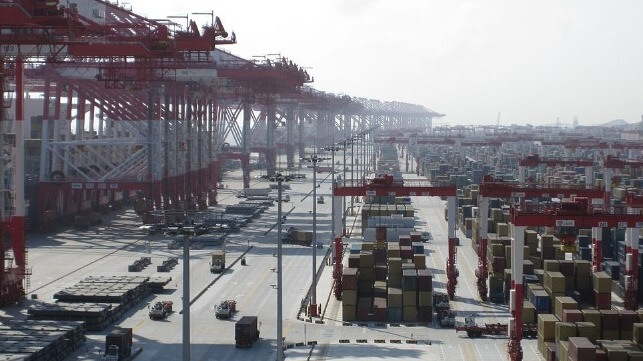Xeneta: Drop in Ocean Freight Rates May Be a Normal Market Correction

As a new sign that shipping market is cooling, this week’s Flexport Ocean Timeliness Indicator (OTI) shows that shipping bottlenecks at major trade lanes are easing. In the Transpacific Eastbound route (China- US West Coast), the shipping time is now down to 83 days – a significant improvement when compared to the 112 days experienced at the height of shipping delays seen in January to mid- February.
“It would be fair to say that the problem has been cut in half from a timeliness perspective. Prior to the pandemic, the baseline was 45 days for transportation time. Strictly speaking this means that 43 percent of the supply chain delay has been ‘fixed,’” commented the CEO of container consultancy Vespucci Maritime, Lars Jensen.
However, although the pace along China-Europe trade lane has improved, the shipping time is still at a high of 93 days, compared to the pre-pandemic time of 55 days. At the peak earlier this year, it reached 122 days. The lingering security situation in Europe is to some extent seen as a reason for the slow improvement.
As the shipping business continues normalizing, ocean carriers have responded by canceling dozens of sailings. In its recent market update, Linerlytica reports that carriers have withdrawn three services along the Asia- US West Coast trade. This represents seven percent of the total capacity on the trade route.
Linerlytica data further shows that in September, the demand in the transpacific route dropped by 20 percent compared to the same month last year. The capacity utilization is also down five percent with the existing services running on 16 percent less capacity.
Freight rates are declining accordingly, and although carriers have responded with blank sailings to reduce the impact of waning demand, Linerlytica notes that the announced capacity cuts are having no material impact so far.
Xeneta’s CEO Patrik Berglund says the drop in rates may be a typical market phenomenon.
“It is worth remembering that rates are cyclical, and maybe the slide in box rates is in the same sort of correction that so commonly affects commodity prices and stock markets. It is also worth remembering that the volumes of cargo are still far above the pre-pandemic levels. The American West Coast Port of Long Beach just reported a near-record August 2022; they were only 764 TEUs (0.10 percent) short of August 2021, which was their best August on record,” said Berglund.
